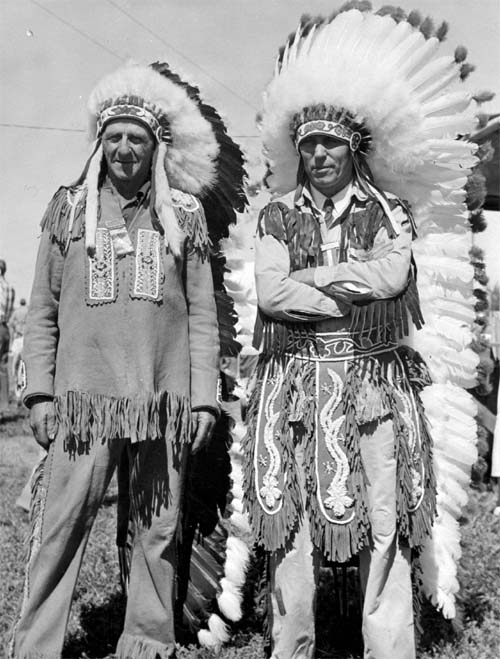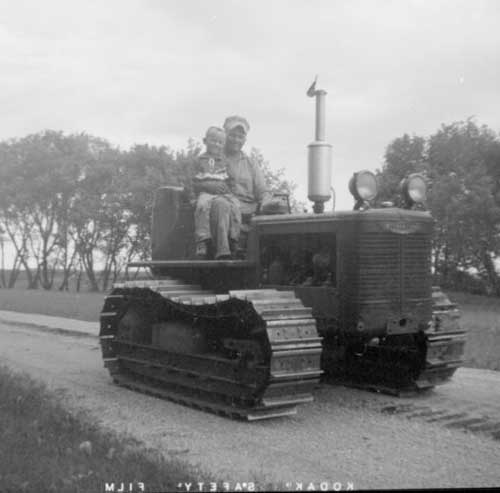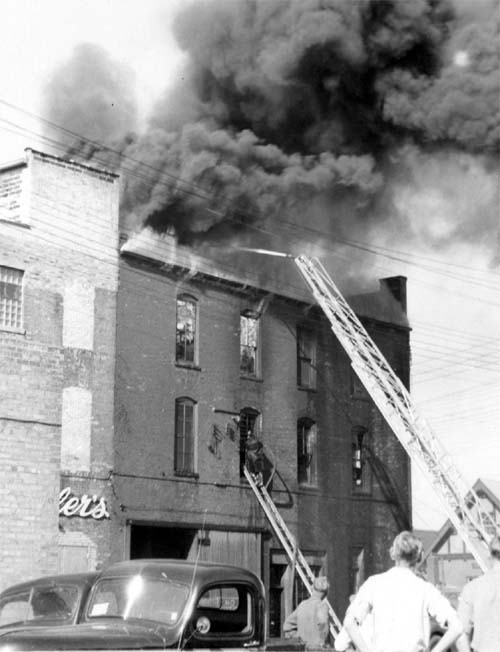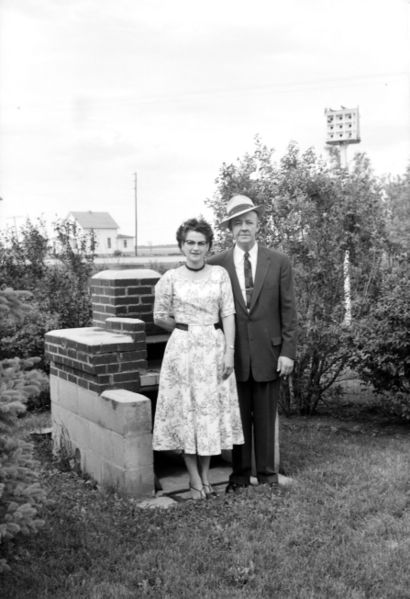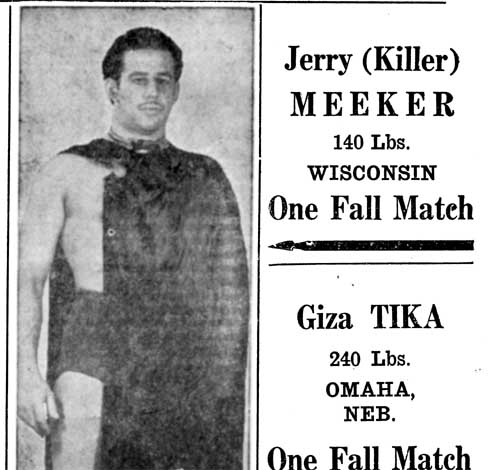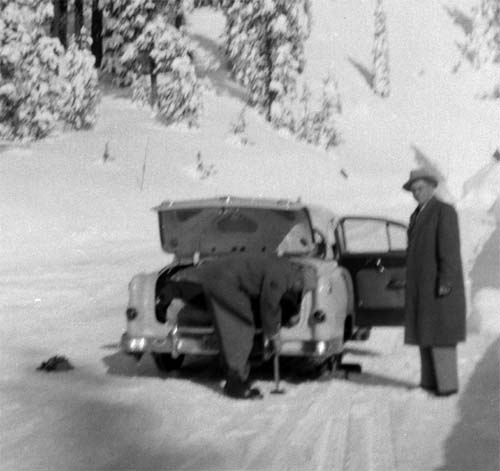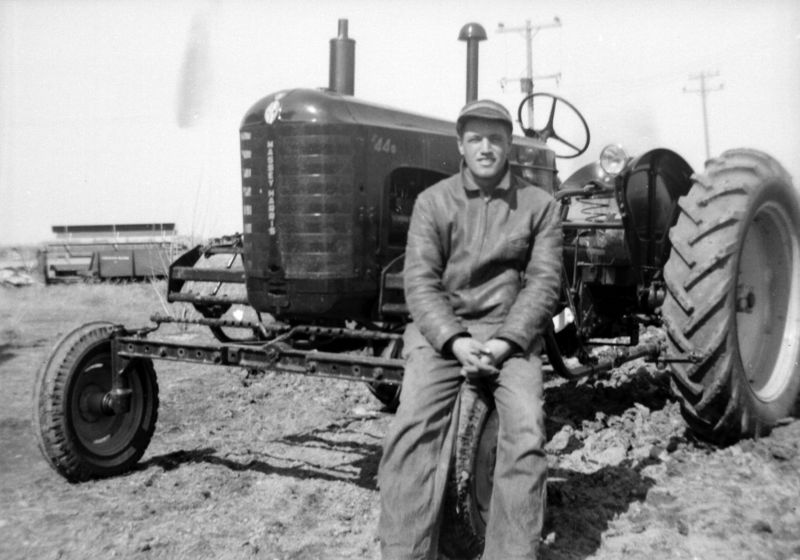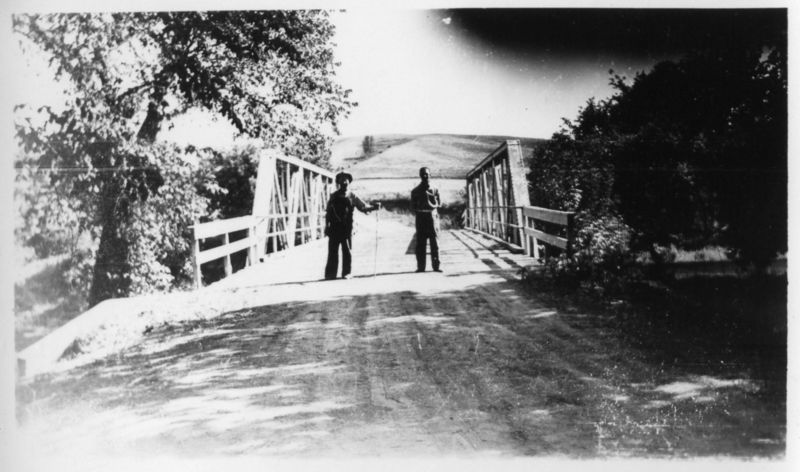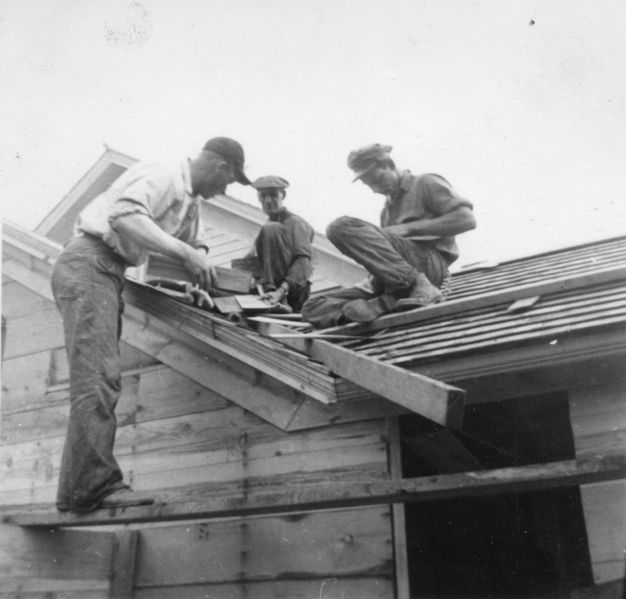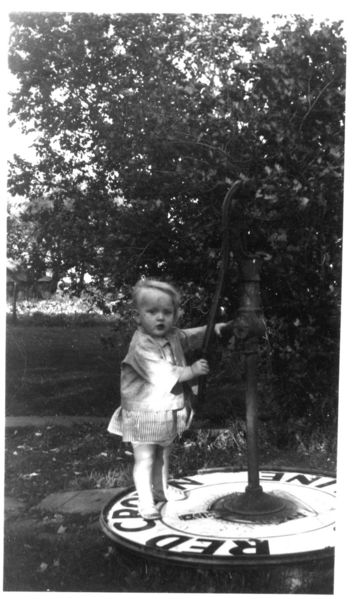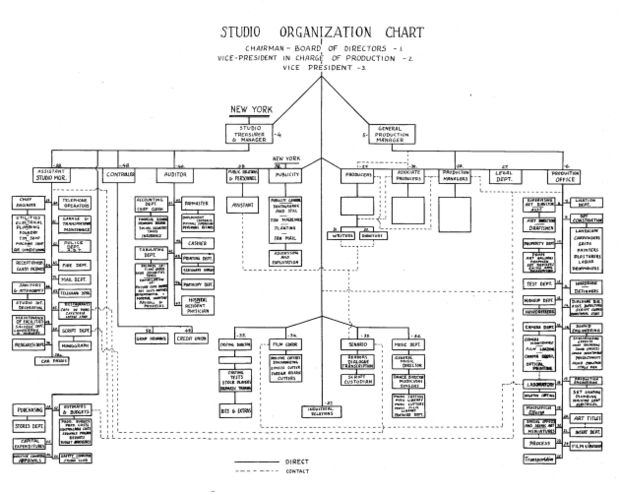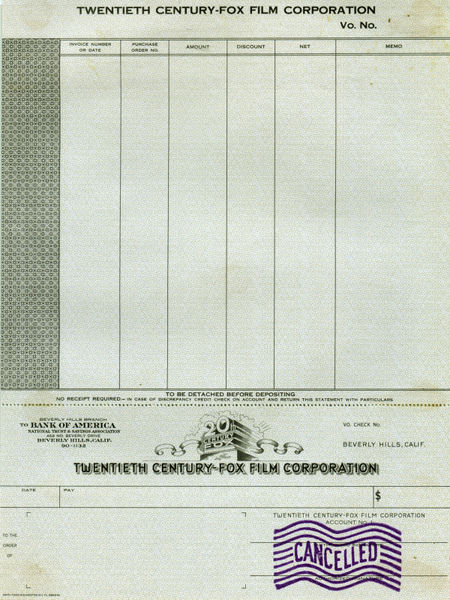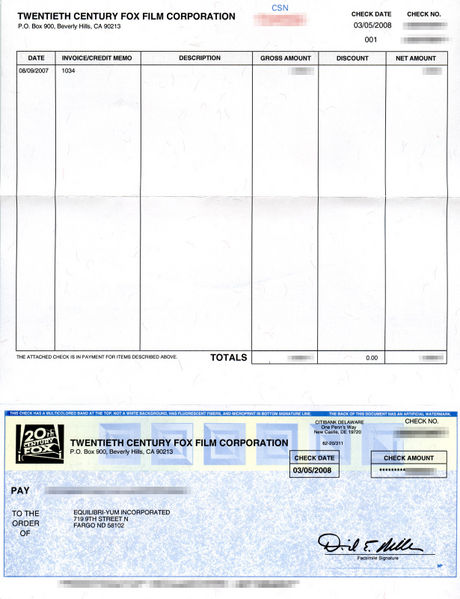 |

| |
|
|  |
IDEA, 1940s

Click for full image When producing a movie, everything stems back to this box: IDEA. In the 1940s, these were the sources of ideas: "Play," "Short Story or Novel," "Newspaper Story or Current Event," "Original Story," "Magazine Article," or "Historical Incident." Way off on the left, however, there's one additional source that's not shown above: "Vice President in Charge of Production." If you want something unoriginal done that isn't in print or in the history books, go talk to the VP, he'll get it done. On another note: this particular flowchart is one of the few places the words "Restaurants," "Mimeograph," "Arsenal," "Publicity," and "Bits & Extras" fit together so well. From the 20th Century Fox flowcharts collection. Labels: 1940s, 20th century fox
German POWs in Minnesota, 1940s
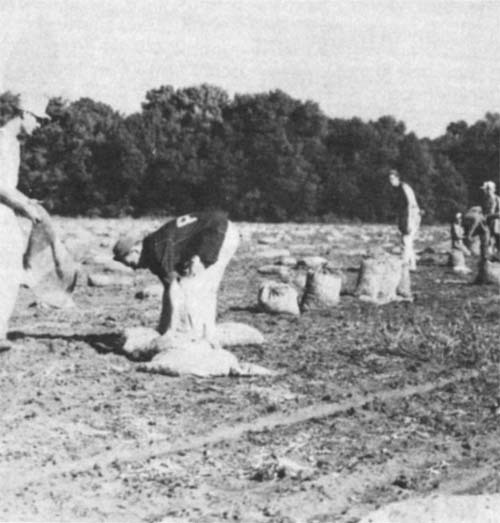
Click for full image As World War II progressed, captured German soldiers were increasing in numbers, and the U.S. needed to do something with them. Numerous POWs were scattered throughout the country and used as labor. Algona, Iowa was the main POW camp in the United States, and several Germans were sent to Algona Branch Camp Number 1 — located in Clay County, Minnesota, just across the river from Fargo. Farm labor was scarce due to the number of men recruited for the military, so POWs helped in the cultivation and harvesting of the crops. This was not a forced labor program; the German soldiers were paid for their work. The above photo was taken at on the Paul Horn farm; Horn was chosen to take POWs because of his position on Clay County's Farm Labor Advisory Board, and the fact he spoke German fluently. From an article in the 8/78 Binford's Guide. Labels: 1940s, Germany, POW, WWII
Broken Children's Glasses, 1945.
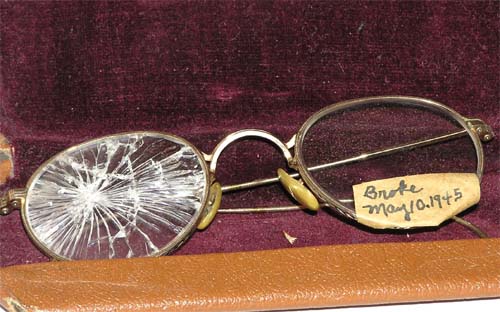
Click for full imageThese glasses were purchased at a flea market in July, 2008. The seller had no information about them, but the fact that they had been stored in situ for sixty years — and the note to prove that fact even moreso — intrigued me enough to purchase them. These are a child's-sized pair of glasses with very little wear. I imagine that, due to their width, the child was under 5 years old. The right lens has a dramatic impact point just to the outside edge of center, which would indicate (to my uneducated eye) that the child had fallen forwards, and turned their head to the left to diffuse the impact, but not fast enough. The glasses hit the ground first, pushing in the right nosepad and exploding the glass into an orb-weaver's handicraft of cracks. As the head kept moving, the nosepad pressed in as far as it could, the lens flexed down the center line in the now-weakened glass and created a crescent-moon crack from top to bottom. The proud parents of this future baby-boomer weren't about to erase this momentous occasion from history: the glasses were marked with the date of the event, placed in their glasses-case, and kept for posterity. May 10th, 1945, will go down in infamy as the day Junior fell down and broke his new pair of glasses. Labels: 1940s, 1945, broken, glasses
Couple By Firepit, 1940s.
Jerry "Killer" Meeker, 1945.
Changing the Tire, 1940s.
Massey Harris '44, 1940s.
Done Opening Gifts, 1940s.
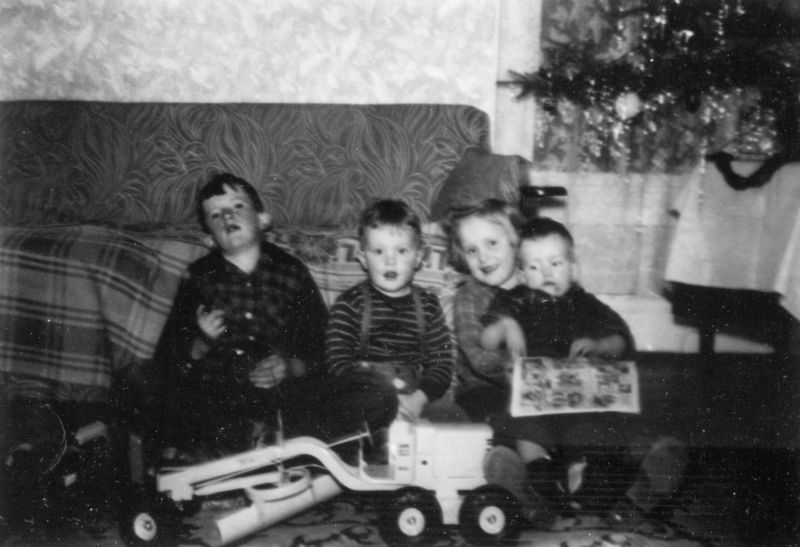 Several children, expressing great excitement at finishing their gift-opening on Christmas morning, 1940s. Labels: 1940s, children, christmas, presents
Froggy The Gremlin's Christmas, 1940s.
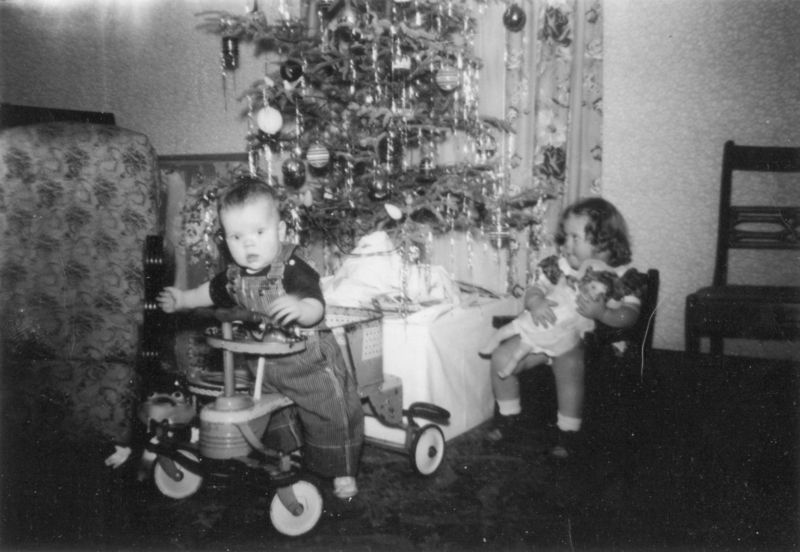 Two toddlers near the Christmas tree. Those bug-eyes and wide-open mouth on the floor, near the boy in the walker? That is Froggy the Gremlin,a children's program character during the days of radio on NBC, and briefly moving to television in the 50s. The toy was produced by Rempel starting in 1948, which dates this photo to the late 1940s. Labels: 1940s, 1948, christmas, christmas tree, rubber toy
Untitled Halsman, 1947.
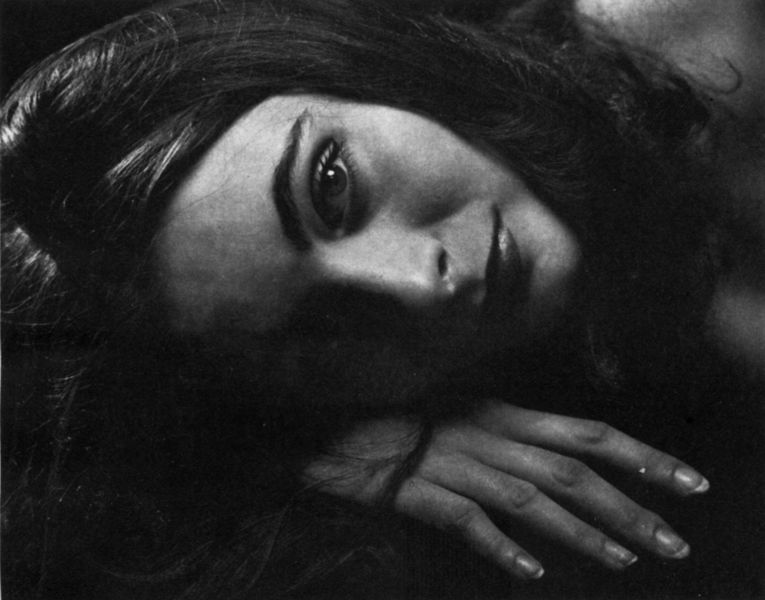 This photo appeared in The Photographer's Workshop in 1951, but the caption explains it was taken 4 years earlier when the young lady, a professional ballerina, was just 17 years old. The model is "Ricky" Soma, better known as Enrica Soma. In the gap between when the photo was taken and when it appeared in this magazine, the young ballerina had graced the cover of Life (also by Halsman, and probably taken the same time as the one above), married and separated from filmmaker John Houston, and, around the time this magazine was hitting newsstands, Soma was giving birth to actress Angelica Houston. Photo by Philippe Halsman. Labels: 1940s, 1947, 1950s, 1951, ballet, enrica soma, Philippe Halsman
Farmall F-20 Threshing, 1942.
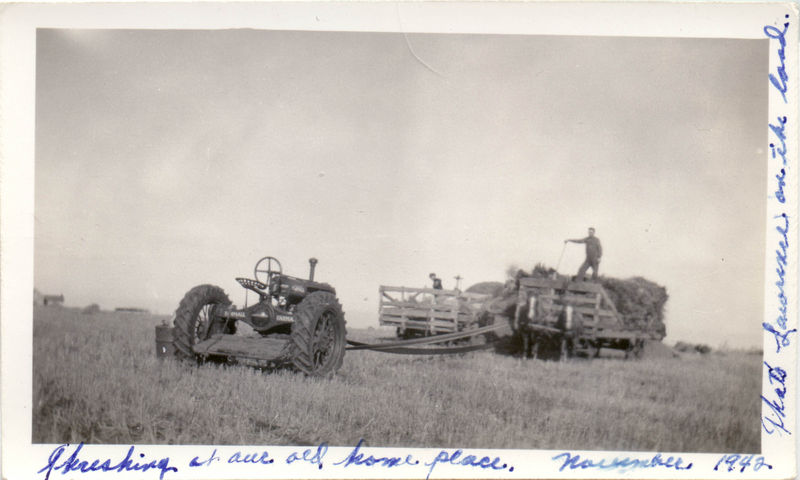 Caption reads, "Threshing at our old home place. November 1942. That's Lawrence on the load." The thresher is stopped and not visible, behind the wagons. More detail tomorrow morning in another photo. The tractor pictured is a mid-1930s-era Farmall F-20 tractor. Labels: 1940s, 1942, farmall, farming, minnesota
Two Men At Bridge, 1940s.
Brothers and Sisters, 1940s
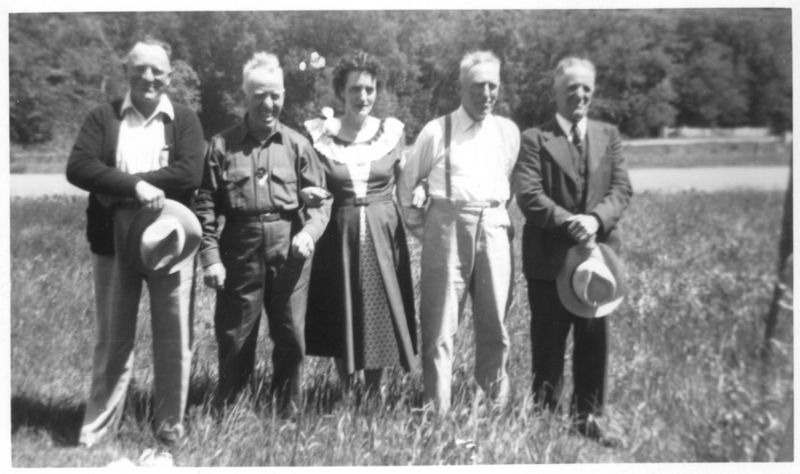 This photo appears to be a 'family reunion' style photo of four brothers and their sister; the men on the left appear more amused than those on the right. Photo, 1940s. Labels: 1940s, family photos, hat
Red Crown Pump Shield, 1940s
Tricycle Conflict, 1946
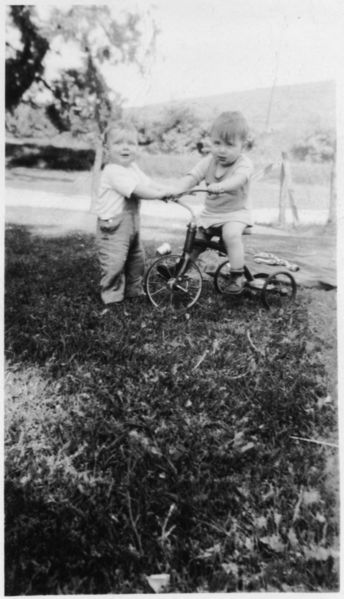 A young boy and girl go head-to-head over a tricycle. Dated by photolab August 1946. Labels: 1940s, children, toy, tricycle
Drinking Right Out Of The Jug
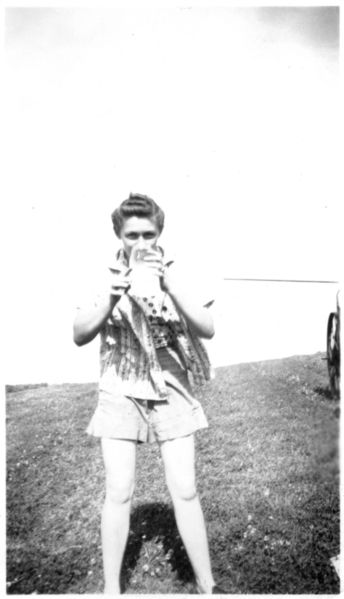 Girl drinking milk straight from jug, standing in yard. Appears 1940s. Labels: 1940s, drinking, milk
Group Baby Photo, 1945
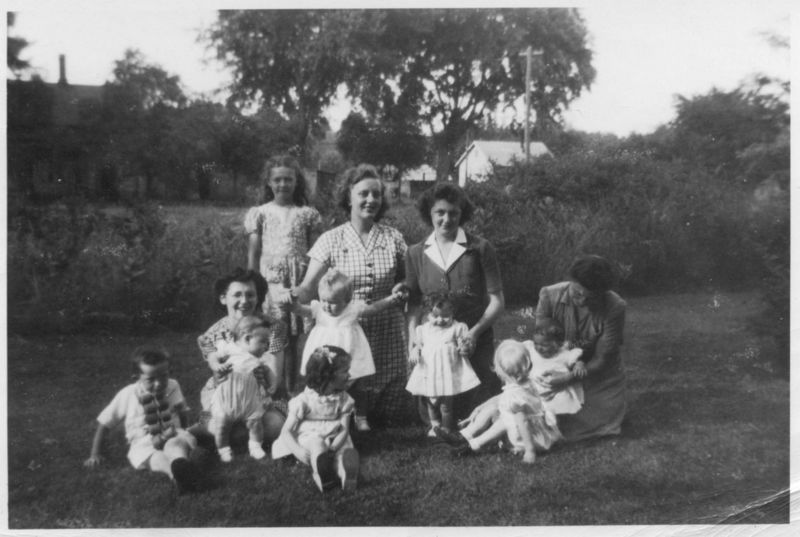 This is why more than 2 babies are rarely photographed together; harder than herding cats. Dated by photo lab "Jul 19 1945", Brown Photo Service, Minneapolis, MN. Labels: 1940s, babies, family photos
20th Century Fox Organization Diagrams
Angelo's Atom Bomb
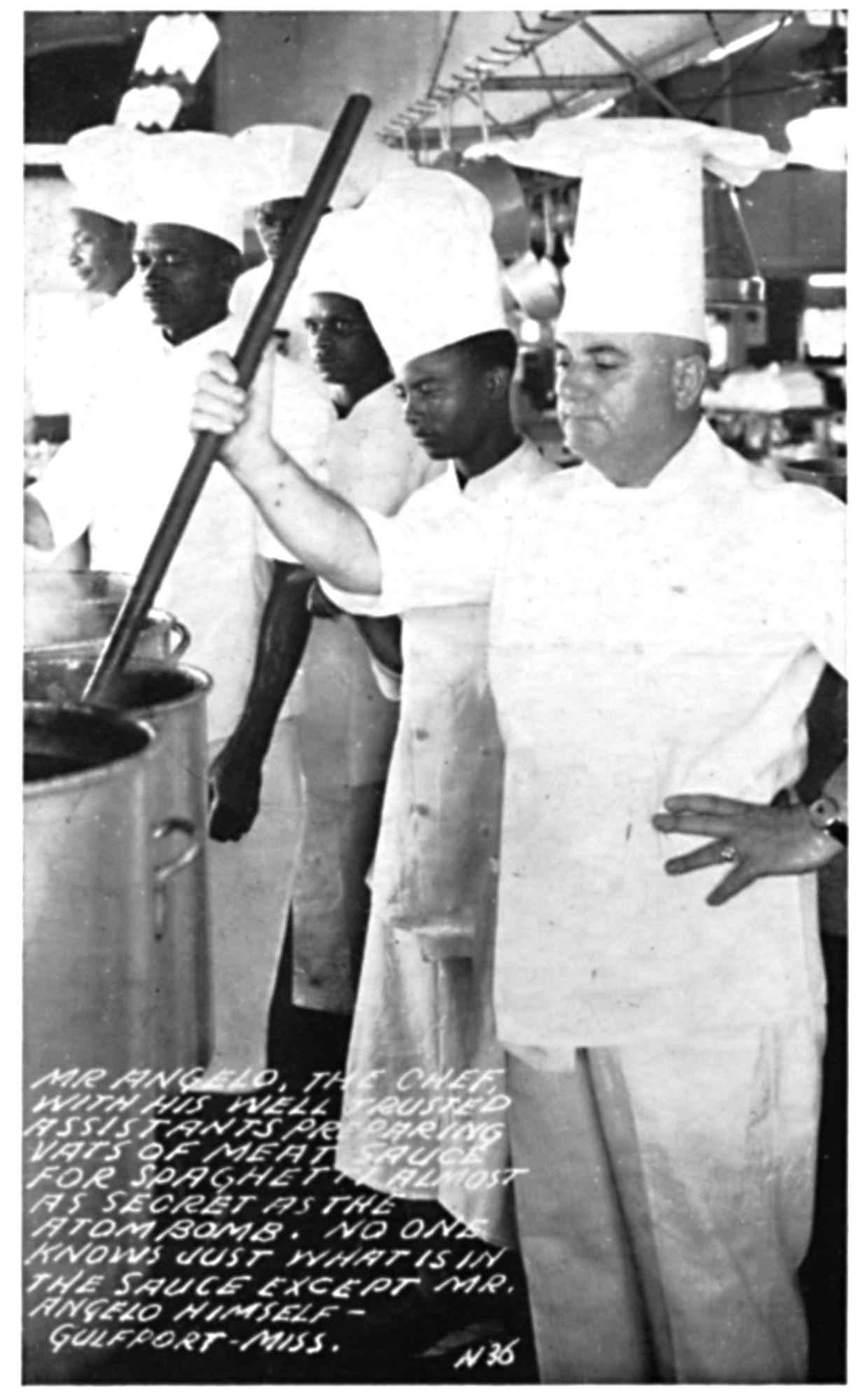 We've met Angelo before We've met Angelo before, a young immigrant who made himself a celebrity chef in the 1930s. In this postcard, a Mr. has been added as a sign of professional respect, but also in a style my wife has seen used in Greek restaurants -- "Mr" being formal, but the use of the first name being more casual and inviting from someone whose food you trust enough to eat. By the time this postcard was created, his fame and power had reached a world-shattering degree: the caption states that his recipe for spaghetti meat-sauce was " almost as secret as the atom bomb." Note that it doesn't use the Bomb as a comparison for quality of strength (although I'm sure, in modern terms, it was 'da bomb'), but instead comparing to the secret. This helps place the age of the post card a bit better: I'd previously figured this was 1940s, and since the postcard alludes that the atom bomb (first tested in 1945) was still considered a hidden secret known to only the U.S., this postcard may be from as late as 1950 but probably not much after. I also must remark (probably in the naivetie of a Northerner) that I am impressed both postcards show Angelo's staff to be composed entirely of Black chefs. While they're referred to as 'assistants,' in the cooking world where the chef whose name is on the sign over the door is par to a king in a restaurant kitchen it's still quite a title. For his assistants be used as a key portion of the restaurant's advertising, both in the photo and referenced in the text on both cards, must show Angelo saw the importance of his staff both in the kitchen and to the rest of the world, rather than devaluing them as just the negro help. Labels: 1940s, angelo's place, gulfport, mississippi, restaurant
Salvador Dali Bloopers
*warning - artistic nudity in links*
In the 1940s, Salvador Dali and Philippe Halsman teamed up and produced a number of surrealistic works of photographic art -- some are iconic, like In Voluptas Mors and Dali Atomicus, but the pair produced many different photos during their collaboration. Others, like this one (I was unable to find its title) and Midsummer Night's Mare, made it to film but did not achieve the acclaim that Mors and A tomicus did. It's easy to forget, when seeing the final results of such a mixing of the minds, that great art isn't a coincidence or a singular act -- producing art requires practice, numerous mistakes, and attention to detail that makes the final product look effortless. The Fall 1950 issue of Photography Workshop stripped away a veneer of that pseudo- effortlessness. In an extensive article about Halsman, they included four 'outtakes' from Atomicus, the unnamed photo above, and another unnamed photo I could find no other source for: 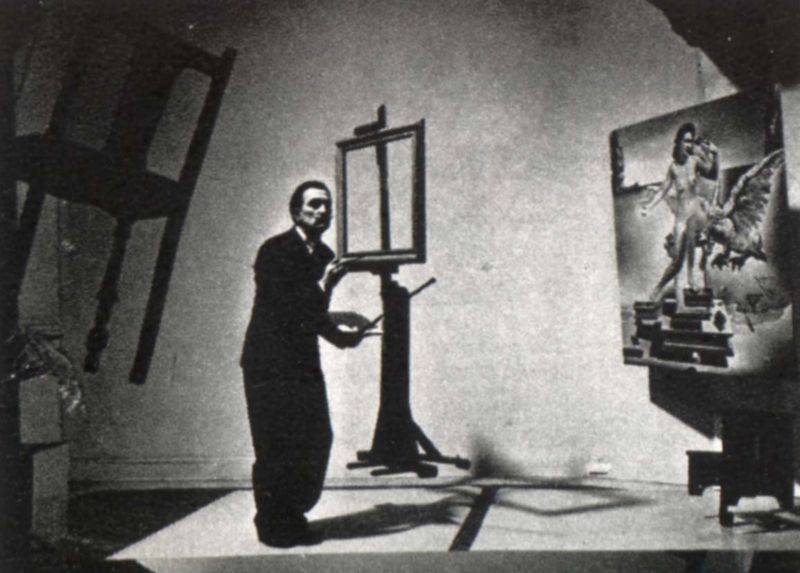 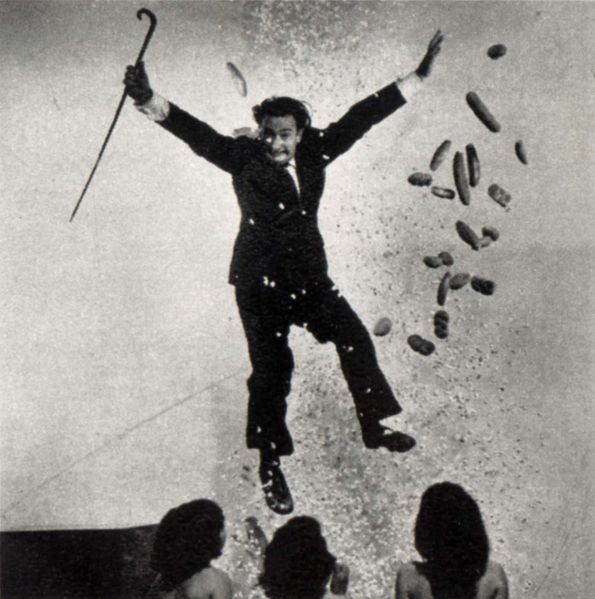 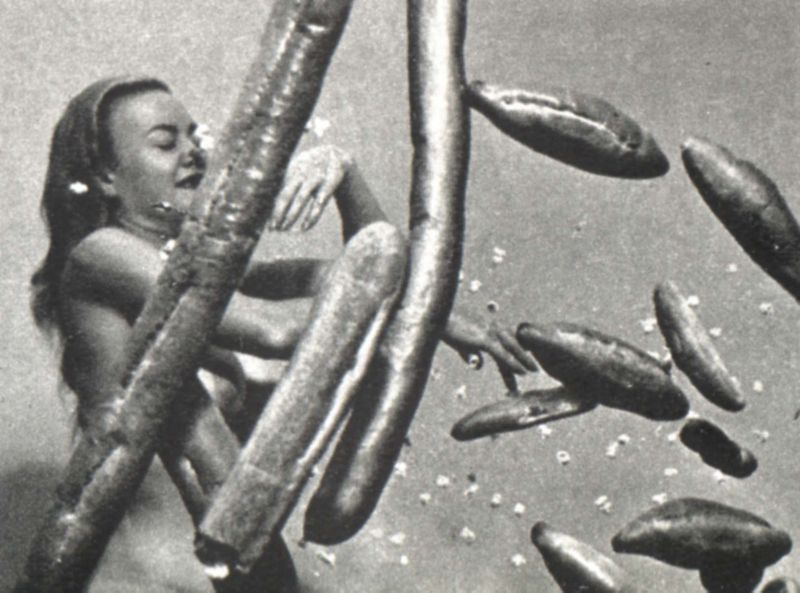 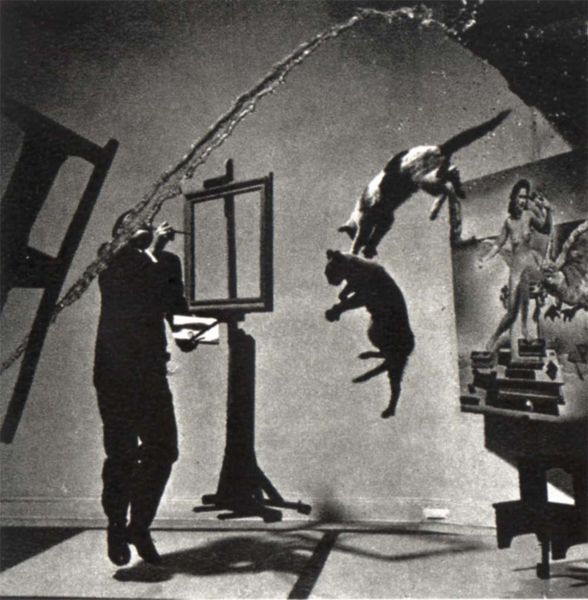 The Atomicus photo, the most famous of the Halsman/Dali colaborration, took 28 takes -- "after each exposure, while the assistants mopped the floor and reclaimed cats, Halsman developed the film to see the progress in the composition. Accidents would happen. The water, intended for the cats, would cover Dali's face instead."Labels: 1940s, 1950s, creative process, Philippe Halsman, photography, salvador dali
20th Century Fox Money - Then And Now
On the left, a 20th Century Fox check from sixty years ago, purchased (along with 15 more pounds of 20th Century Fox ephemera from the early forties) by my wife and I for a lot of money, on the assumption we could re-sell it for a whole lot more than we paid. We've had an appraiser say it could have been worth more than a thousand dollars, were we to find the right buyer. Before a buyer found us, 20th Century Fox's legal department found us. See, the large book of Fox ephemera was lent by Fox to the University of Southern California... and was stolen from the university's library. Allegedly, entirely according to what the Fox lawyer told us on the phone. Rather than calling the police and having us hauled in for trafficking stolen materials, one of Fox's lawyers contacted us, asked us to take the paper off the market, and offered to pay us what we spent in acquiring it in the first place. A reasonable deal; we could have argued to keep it, we could have gone to court, Fox would have had to figure out how to prove that this book was the one stolen, we'd prove our ownership and the unlikeliness that it ever belonged to 20th Century Fox...but we thought it better to cut our losses. In the mail today arrived the check on the right -- a modern 20th Century Fox check reimbursing us for our expenses in holding on to this lot for Fox until UPS delivers it sometime next week. As the issue is ownership, and not protection of intellectual property, I took some scans of the cooler aspects of the lot before I ship it out in the next couple days. You'll get to see some of it soon. Labels: 1940s, 20th century fox, bank of america, check, cheque
Angelo's Place - Gulfport Mississippi
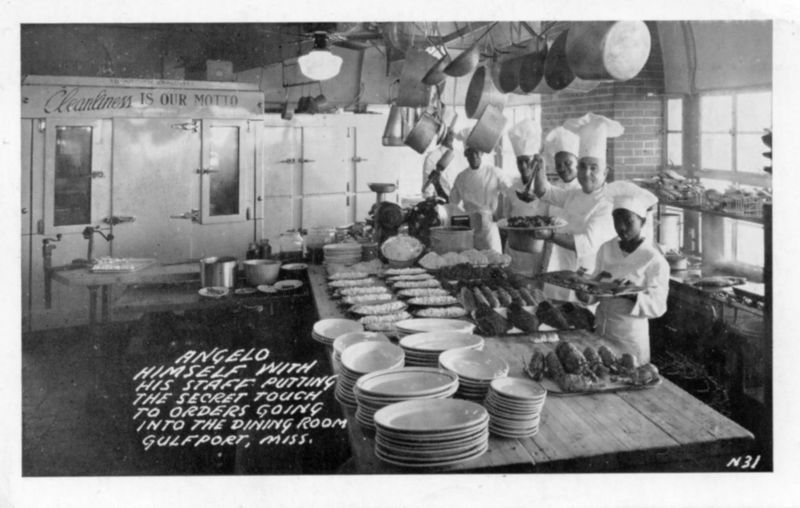 The postcard assumes you know who Angelo is -- this fine chef was so ubiquitous that his first name was enough to tell all who he is. Emeril? Bah -- television was his tool...Angelo was known by word-of-mouth! This postcard is done in the style of real-photo postcards from the 1910s to 1930s, but appears to have been printed much later (and it's not actually a photographic copy). Angelo Xidis immigrated as a teen in 1915, opening his eponymous restaurant in 1935. This would seem to be about the right time for this photo, maybe 1940s. Sadly, Angelo's closed in the 1980s, well after the original Angelo retired, but the restaurant lives on in the numerous postcards that recommended his restaurant to the friends and relatives of a multitude of Mississippi vacationers. Labels: 1940s, angelo's place, gulfport, mississippi, postcard, restaurant
On Leave at Duffy's Gay Nineties
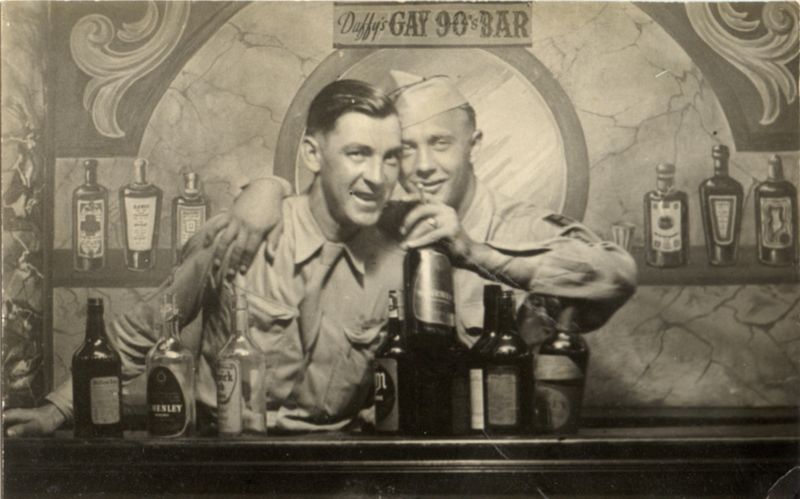 The back of this postcard says it was taken in Coney Island, so I doubt there was a real Duffy's Gay Nineties -- just a painted backdrop for fun-seekers to get a photo to mail back home. These two guys, on leave from the Army in 1946, seem to be enjoying themselves. The guy on the left has a single chevron, identifying him as private. The guy on the right, while blurry, still has a clear enough view of his unit patch: 1st Army. The guy on the right has some tell-tales in that hand, too (besides the bottle): on his ring-finger is a wedding ring, and between his fingers, a cigarette. The war was over, his best gal was waiting for him back home, and he got to live it up at Coney Island once in a while - he had no complaints. Labels: 1940s, 1946, 1st army, army, army uniform, coney island, first army, liquor bottle, new york, WWII
|  |
|
|













